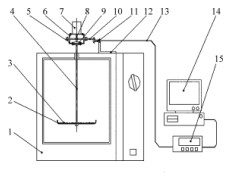Dynamic distribution of water content in wood during microwave drying and conventional drying
Abstract: The dynamic distribution of moisture content in black walnut wood during microwave drying and conventional hot air drying was analyzed and compared by means of X-ray scanning moisture content distribution test. In the whole microwave drying process, although the moisture content in the inner layer is lower than that in the outer layer, there is local inhomogeneity of moisture distribution, but there is no moisture gradient contrary to the conventional hot air drying; in the microwave drying, the moisture content in the inner layer and the surface of the wood. The difference of moisture content between core layer and surface layer decreases with the drying time and increases at first and then decreases with the drying process.
Key words: Wood Science; black walnut; wood drying; microwave drying; X ray scanning; moisture content distribution
Accurate measurement of dynamic distribution of moisture content in wood during microwave drying is the prerequisite for realizing optimal control of drying process and in-depth study of drying mechanism.Conventional hot-air drying is widely used in practical production because of its mature technology and large loading capacity. With the advantages of integral heating and fast drying speed, it has been applied to the drying of precious and Difficult-to-dry wood to a certain extent.
Previous studies have shown that there exists an internal high and external low moisture gradient field opposite to the temperature gradient in the wood during conventional hot air drying. Some scholars have conducted preliminary studies on the distribution of moisture content in wood during microwave drying, but the results are not consistent. Some scholars believe that the moisture content in wood during microwave drying is different. Some experimental results show that the moisture content of wood inner layer is higher than that of surface layer in microwave drying, and there is no moisture gradient field contrary to that of conventional hot air drying. In addition to the rapid moisture migration and the rapid change of moisture content distribution in wood, it is very difficult to accurately determine the moisture content. Another important reason is that an ideal method for measuring the dynamic distribution of moisture content has not been found.
At present, in the study of moisture distribution in wood during drying process, slicing method, CT scanning method and even some scholars indirectly measure moisture content in wood below fiber saturation point by measuring internal pressure and temperature of wood. For example, the slicing method can not continuously measure the moisture content distribution of the same wood sample in the drying process, and the moisture evaporation inevitably affects the measurement accuracy in the slicing process; C T scanning is not only slow in scanning speed, expensive equipment, but also lack of application value in actual production. It is inconvenient for quantitative analysis because the scanning results are mostly visualized images, and the prediction of wood moisture content by measuring pressure and temperature is only suitable for below fiber saturation point, and the number of measuring points is very limited.
Therefore, the accurate measurement of moisture dynamic distribution in the direction of wood thickness during drying is always a difficult problem in the field of wood drying. In recent years, X-ray scanning method has been tried to measure moisture content and moisture distribution of wood. The results show that this method not only has the advantages of fast detection speed, low equipment cost, but also can be used in a wide range of moisture content. The correlation coefficients between the measured values and the measured values by the absolute drying method are above 0.95. In this paper, the black walnut wood is taken as the research object, and the intermittent microwave is analyzed and compared by the method of X-ray scanning moisture distribution measurement. The dynamic distribution of moisture content in wood during drying and conventional hot air drying can provide scientific basis for the study of moisture transfer mechanism in wood during microwave drying.
1 theoretical basis
Wood is a natural polymer consisting of cellulose, hemicellulose, lignin, extracts and a small amount of other chemicals. In this study, the selection of mass attenuation coefficient is determined by pre-scanning the instrument itself.